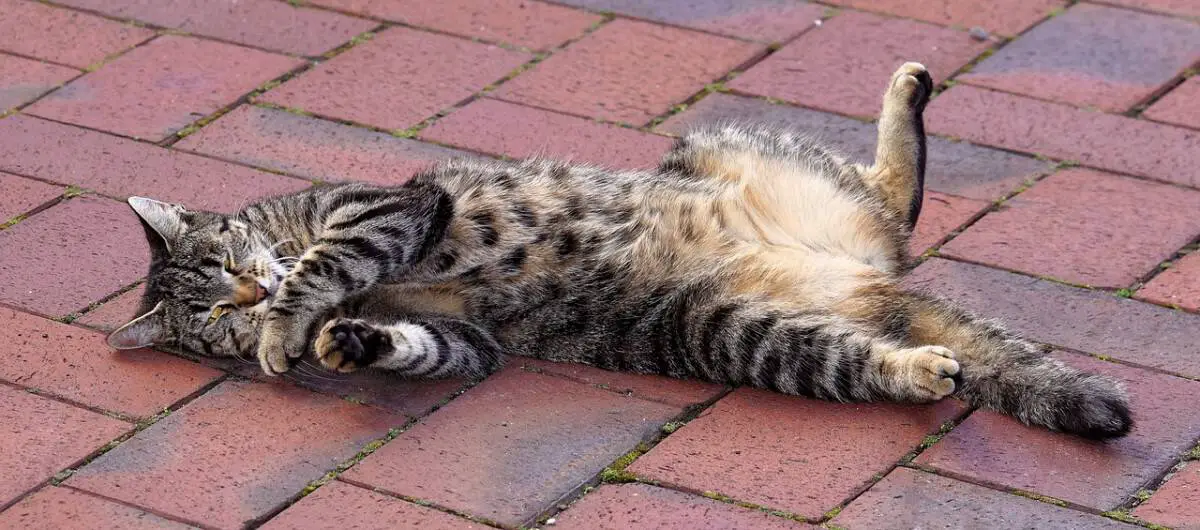Cats are known for their playful and sometimes mischievous behavior, and one expected behavior that many cat owners have experienced is their cat swatting at them. This can be confusing and even painful for the owner, especially if they are unsure why their cat is doing it. In this article, we will explore some of the reasons why cats swat at their owners.
One reason cats may swat at their owners is that they feel overstimulated or overexcited. Cats have the instinct to play and hunt; sometimes, this instinct can be triggered by their owner’s movements or actions. So if a cat becomes too excited or overstimulated, it may swat at its owner to release some of that energy.
Another reason why cats may swat at their owners is that they feel threatened or uncomfortable. Cats are naturally territorial animals and may become defensive if they feel like their space is being invaded. If an owner approaches their cat too quickly or too aggressively, the cat may swat at them as a way to protect themselves.
Territorial Instincts
Cats are territorial animals with a strong instinct to protect their territory. So when they feel that their territory is being invaded or threatened, they may swat at the intruder as a warning to stay away.
This territorial behavior is often seen in multi-cat households, where cats may compete for resources such as food, water, and litter boxes. In these situations, cats may swat at each other to establish dominance and protect their resources.
Cats may also swat at humans if they feel their personal space is being invaded. This can happen if a person gets too close to the cat’s food bowl
or litter box, or if the cat feels the person is getting too close to their resting spot.
Playful Behavior
Cats are known for their playful nature, and swatting can be one of their ways to initiate play. For example, they may see your hand or fingers as a toy and try to engage with you. This behavior is expected in kittens, but adult cats may also exhibit playful swatting.
It’s important to note that cats are instinctive to hunt and play, and this behavior is not meant to be aggressive or harmful. However, it’s essential to set boundaries and avoid encouraging aggressive play. If your cat becomes too rough during playtime, it’s best to redirect their attention to a toy or another activity.
Some cats may also swat at you to get your attention. They may want to play, be petted, or be fed. If you notice your cat swatting at you repeatedly, it’s essential to understand their needs and provide them with the appropriate attention and care.
Cats may also swat at you if they are bored or stressed. Providing your cat with plenty of toys and activities can help prevent boredom and reduce stress. It’s also essential to create a safe and comfortable environment for your cat to reduce stress and anxiety.
Fear or Anxiety
Another reason why cats may swat at their owners is fear or anxiety. Cats can become fearful or anxious for various reasons, such as a change in their environment, loud noises, unfamiliar people or animals, or past traumatic experiences.
When a cat feels scared or anxious, it may show aggressive behavior such as swatting, hissing, or growling. This is their way of protecting themselves from perceived threats or danger.
If your cat is swatting at you out of fear or anxiety, it’s essential to identify the cause of their distress and address it accordingly. For example, if your cat is afraid of loud noises, you can provide a safe and quiet space to retreat to during thunderstorms or fireworks.
You can also try to desensitize your cat to its triggers by slowly introducing them to the source of its fear or anxiety in a controlled and positive environment. This can help your cat feel more comfortable and less likely to exhibit aggressive behavior.
It’s important to note that punishing your cat for swatting or exhibiting aggressive behavior is not a practical solution. This can make their fear or anxiety worse and lead to more aggressive behavior in the future.
Health Issues
While most of the time, cats swatting at you is just playful behavior, some health issues could cause them to act aggressively. Therefore, it is essential to be aware of these issues so that you can take appropriate action.
One possible cause of swatting behavior in cats is pain or discomfort. If your cat is experiencing pain, it may lash out when touched or petted.
This could be due to various health issues, including arthritis, dental problems, or an injury. However, if you notice that your cat is swatting more than usual or seems to be in pain, it is essential to take them to the vet for a checkup.
Another potential cause of swatting behavior in cats is stress or anxiety. Cats can become stressed for various reasons, including changes in their environment, lack of socialization, or even boredom.
If your cat is swatting more than usual or seems anxious or stressed, there are steps you can take to help them feel more comfortable. These may include providing them with more toys and activities, creating a safe and comfy relaxing space, or even using calming pheromone sprays or diffusers.
Sometimes, swatting behavior in cats can signify a more serious health issue. For example, cats with hyperthyroidism may become more aggressive or irritable. If you notice that your cat is swatting more than usual, or if they seem to be exhibiting other unusual behaviors, it is essential to take them to the vet for a checkup.
While swatting behavior in cats is usually harmless, it is essential to be aware of any potential health issues that could be causing it. You can help your cat stay healthy and happy by taking appropriate action.
Training and Socialization
Training and socialization can help prevent aggressive behavior in cats. Socializing kittens at a young age is essential so they become familiar with different people, animals, and environments. This can help reduce fear and anxiety, which can lead to aggressive behavior.
Positive reinforcement training can also be effective in preventing aggression. Rewarding good behavior with treats, praise, or playtime can encourage cats to continue behaving well. Punishing or scolding a cat for bad behavior can make the behavior worse.
Providing cats with plenty of mental and physical stimulation is also important. Boredom and lack of exercise can lead to aggressive behavior. Providing toys, scratching posts, and interactive playtime can help keep cats entertained and prevent them from becoming aggressive.
If a cat is already exhibiting aggressive behavior, it is essential to seek a veterinarian’s or animal behaviorist’s advice. They can help determine the underlying cause of the aggression and develop a plan to address it.
Conclusion
While cats are generally known for their aloof and independent nature, they have complex emotions and behaviors. Swatting is one of the ways they communicate with their humans and other animals. It can be a sign of playfulness, fear, or frustration.
Understanding your cat’s body language and behavior is essential to determine the reason behind their swatting. You can redirect their energy toward toys or games if it’s playful. If it’s fear or frustration, you can work on creating a more comfortable and safe environment for your feline friend.
It’s also crucial to remember that cats have their personalities and preferences. Some cats may enjoy petting and cuddling, while others prefer their space. It’s important to respect their boundaries and not force them into uncomfortable situations.
Swatting is a natural behavior for cats and should not be considered a sign of aggression or malice. You can build a solid and loving relationship with your feline companion with patience, understanding, and proper training.
[su_box title=”Affiliate Disclosure”]This website is supported by its readers. Please assume that all links are affiliate links. If you make a purchase from one of the links we will make a commission from Amazon. Thank you.[/su_box]





